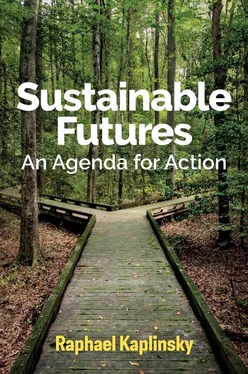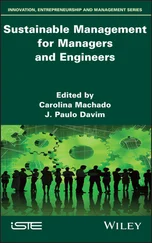Another possible source of disruption which is internal to the financial system is the market in cryptocurrencies such as Bitcoins. These are essentially Ponzi schemes (which are often referred to graphically as pyramid schemes). These schemes generate returns for early investors by bringing in new investors who fund the gains reaped by early entrants. However, the more investors there are in the scheme, the greater the number of new investors required to keep the system growing and to maintain the stability of the pyramid. Thus, Ponzis are inherently unstable. Moreover, because of their need for exponential growth (an ever-growing number of new investors are required to service existing investors), they have a limited life.
Unlike national currencies which are guaranteed by governments, the only value which cryptocurrencies possess is the belief that they are valuable. Their appreciation in value depends on more and more investors sharing this belief. They have no guardians, and once belief in their future value is eroded, the edifice may crumble very rapidly. Take the case of Bitcoins. The value of Bitcoin ‘currency’ has grown at an extraordinarily rapid rate – between October 2016 and October 2017 by more than 5,000 per cent. In December 2017, a Bitcoin was valued at $19,703. But its value was unstable. In early January 2019, its value had dropped to $4,057, including a fall of $1,000 in a 24-hour period. On 9 March 2020, fears of a spreading Covid-19 pandemic led to a fall of $26bn in the value of cryptocurrencies. In February 2021, the value of a Bitcoin soared to $52,000. As the financial journal Forbes warned readers, ‘Investing in cryptocoins or tokens is highly speculative and the market is largely unregulated. Anyone considering it should be prepared to lose their entire investment.’ 14If the Bitcoin market was small, this crazed speculation would be of little significance. In 2016, cryptocurrencies totalled less than $18bn. This rose to $129bn in 2018, and $237bn in 2019.
Disruption to global supply chains
As we will see in Chapter 5, deepening globalization after the mid-1980s helped to rescue falling corporate profitability and prolonged the life of the atrophying Mass Production paradigm. However, outsourcing production to low-wage developing economies had important economic and social consequences. In the economic sphere, it resulted in widespread deindustrialization and persistent imbalances in trade for some of the major high-income economies, notably the US and the UK. In the social sphere, in most of the high-income economies it led to the collapse in employment and income in the rust-belt regions which had powered growth in the Mass Production paradigm’s heyday.
In the chapter that follows, I will show how these and other tensions led to the election of populist governments in a number of countries, including in the US. The Trump Administration placed trade imbalances at the forefront of its political agenda. Tariffs were introduced against $50bn of imports from China in 2018, and a further $200bn in 2019. China responded in kind with tariffs against imports of soybeans form the US. In 2019, the US took action to suspend sales of vital technology to Huawei, the Chinese telecommunications firm, and pressured its European ‘allies’ and Australia to take similar action. The US also imposed tariffs on imports of steel and aluminium from the European Union, which in turn threatened retaliatory actions. Australia’s call for an independent inquiry into the origins of the Covid-19 pandemic in China in May 2020 led to the imposition by China of damaging tariffs on Australia’s agricultural exports.
These unfolding tensions in trade between the US and its major trading partners have the potential to repeat the ‘beggar-thy-neighbour’ trade policies widely deployed during the Great Depression. In the 1930s, individual countries tried to protect their domestic industries from import competition. This led to a tit-for-tat response from trading partners and a downward spiral in international trade and economic activity. Coupled with the disruption to global supply chains during the Covid-19 pandemic, this has resulted in the disruption of one of the primary engines of economic growth in recent decades. In the modern global economy where supply chains extend across vast distances, a sharp reversal in the trajectory of global trade poses a severe challenge to the sustainability of economic growth in individual economies and regions such as the EU and North America.
2.5 So What Does the Future Hold?
There are, thus, a variety of points of fragility in the contemporary global economy which make it unlikely that the past trajectory of economic expansion – albeit slow by comparison with the Golden Age – can be sustained. But what event might trigger the collapse of a fundamentally insecure economic system?
The outbreak of World War 1 illustrates how a specific event which triggers a systemic crisis may be unpredictable. Underlying tensions between European powers had grown over the decades preceding the war. Germany was at odds with the two largest colonial powers, Britain and France, over access to raw materials and markets. Russia was witnessing rumbling discontent which would ultimately lead to the Bolshevik Revolution in 1917. There had been a build-up of military expenditures in both Germany and Britain in the preceding decade, and a rise in nationalist fervour throughout the continent. These underlying tensions had led to a number of complex inter-country alliances, notably between Russia and Serbia; Germany and Austria-Hungary; France and Russia; Britain, France and Belgium; and Japan and Britain.
All of these tensions suggested that conflict was likely. But it would have been difficult to anticipate the trigger to this systemic crisis. In 1914, Franz Ferdinand, the Archduke leader of the Austro-Hungarian empire was assassinated by a Serbian nationalist group that sought to detach Bosnia and Herzegovina from the Austrian empire. As a consequence of the interdependency and complex alliances between countries, Austria-Hungary then declared war on Serbia. Russia responded by defending Serbia, and this led Germany to declare war on Russia. In turn, this resulted in France challenging Germany and Austria-Hungary. Germany then attacked France, through Belgium, and this led Britain to enter the fray, supported by its alliance with Japan. Later, as the war unfolded, both Italy and the US joined the conflict.
I have suggested three points of fragility in earlier sections, which might trigger a new and more severe ‘Great Recession’ – a debt crisis (within leading countries or in sovereign debt), the volatility and fragility of the financial system (a burst stock market bubble, a flash-crash in stock prices resulting from automated trading, a collapse in cryptocurrencies) and a severe disruption to global supply chains. Each of these potential sources of disruption results from the very workings of the Mass Production paradigm. But there are also other sources of fissure which are less tightly linked to Mass Production, such as conflict between China and its regional neighbours (in Taiwan, on the Indian border and in the South China seas), between the US and Iran in the Gulf, and military belligerence by North Korea.
In addition, at the time in which I am writing this book, it is clear that the economic impact of the Covid-19 pandemic will be devastating, and will almost certainly be long lived. Is the Covid-19 pandemic an ‘endogenous’ disruptor – that is, an event which is a direct consequence of the character of Mass Production? Or is it better seen as an ‘exogenous’ disruptor, a ‘black swan’ event which is unrelated to the character of the Mass Production techno-economic paradigm during which it emerged? I will return to this issue in later chapters. In a sense, though, it does not matter. What does matter is that post-pandemic economic recovery, if that is possible, will require a changed economic and political structure, with complex and different impacts on the environment. Seen through the lens of techno-economic paradigms, it is conceivable that Covid-19 not only poses a major economic threat, but also provides the opportunity to transition to a more sustainable world. I will explore these issues in Chapters 8and 9when I offer an agenda for turning threat into opportunity.
Читать дальше












